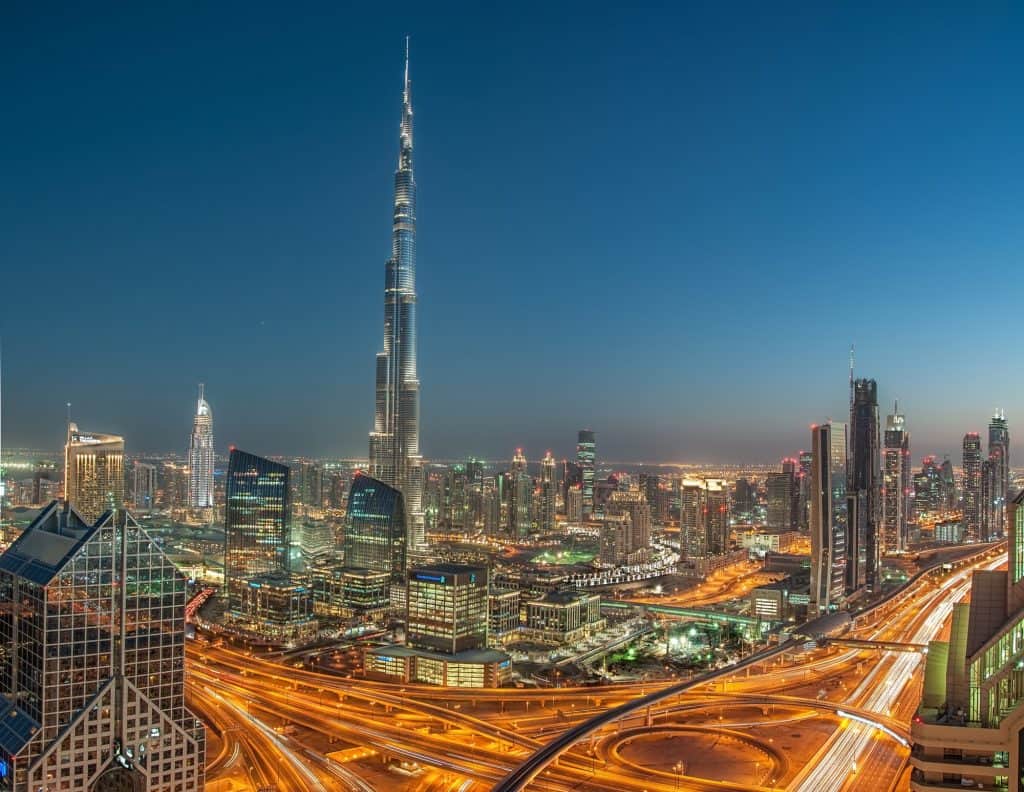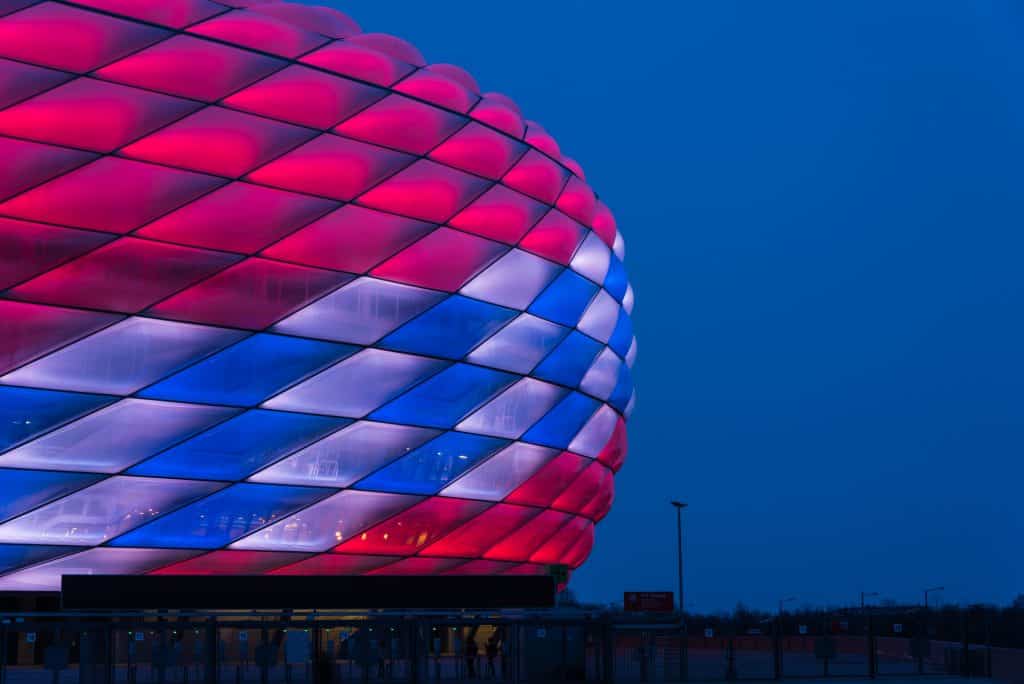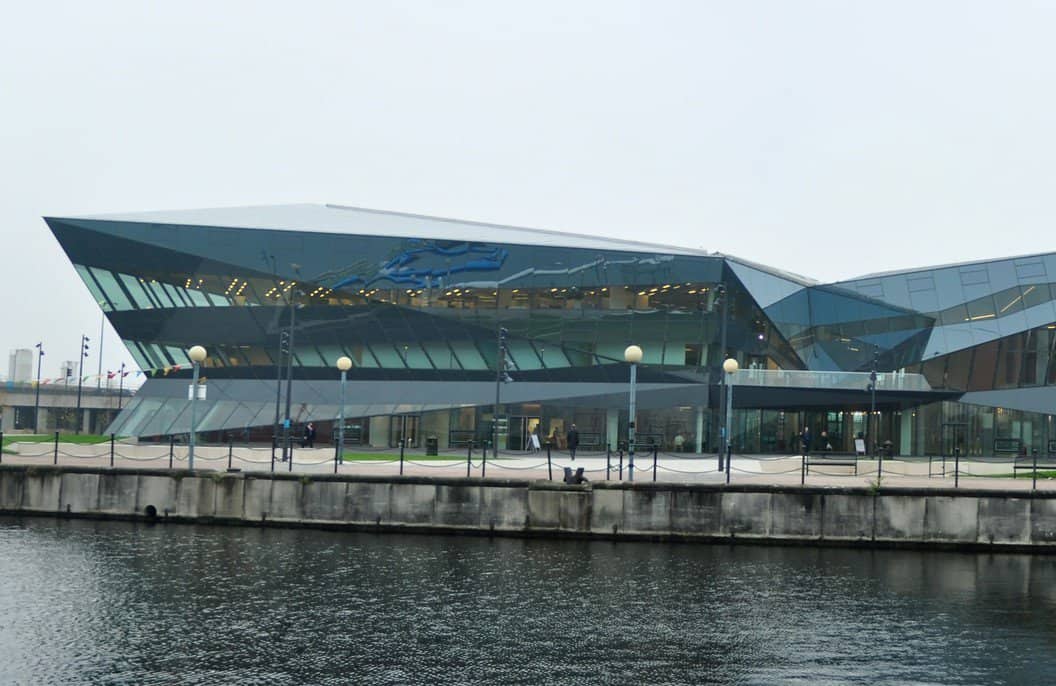A smart building leverages technology to energy more efficiently, cuts down maintenance costs, and improves the lives of its occupants. An intelligent building uses systems to monitor energy use and minimize consumption. In recent years, the term has expanded to include structures that consciously use resources like daylight, water, and building materials.
Here are nine of the best smart buildings in the world:
- The Crystal, London
- Glumac, Shanghai
- The Edge, Amsterdam
- Burj Khalifa, Dubai
- DPR Construction, San Francisco
- Allianz Arena, Munich
- Bullitt Center, Seattle
- Capital Tower, Singapore
- Hindmarsh Shire Council, Melbourne
In this article, I’ll take a closer look at each of these buildings and explore what makes them smart. So, let’s see what the smartest buildings in the world are doing right and take a deep dive into the future of architecture!
1. The Crystal, London
The Crystal was constructed back in 2012. This building cost a hefty £30 million and was the predecessor for many green buildings around the world today. The space was created to showcase Siemens’ latest development in green technology and is a testament to their dedication to creating sustainable office spaces.
The Crystal utilizes over 5,000 sq. feet (465 square meters) of solar panels and an underground heat pump to generate the energy required by the entire building. Siemens boasts that the Crystal releases up to 70% fewer carbon emissions than other office spaces of similar size and scope.
Each lamp in the building is controlled by a lighting system that adjusts the light levels based on natural daylight at any time of the day. Aside from the lamps, the building features an automatic ventilation system that monitors indoor and outdoor temperatures and regulates airflow accordingly.
When the temperature is bearable, the windows open automatically for natural ventilation. When it gets too hot or too cold, the windows close automatically, and an internal ventilation system takes over.
The Crystal also possesses a unique water management system that includes water-efficient fittings, a rainwater treatment facility, and a recycling plant that recycles all the water in the building so that they can use it indefinitely.
The Crystal may have been built in 2012, but it’s still one of the leading sustainable buildings. It’s the first building to obtain the highest levels in both BREEAM and LEED environmental certifications.
2. Glumac, Shanghai
The Glumac is a testament to how even highly-polluted spaces and fractured landscapes can be the grounds for an environmental revolution. Even before their intelligent design, the construction team had to work with several challenges to set up the Glumac. Some of these included:
- Uneven landscape
- Unregulated building material
- Poor air quality
- Polluted Environment
Even with these challenges, Glumac has managed to cement its place as one of the world’s most intelligent and sustainable buildings.
Aside from a LEED Platinum certification, the Glumac has also pursued (and achieved) all the Living Building certification petals. This certification makes Glumac one of the first buildings in Asia with net-zero water, energy, and carbon design.
Their rainwater harvesting system is so adept that they have positive water consumption while operating this building.
The Glumac is famous for having the best air quality in Shanghai, a city known for its polluted atmosphere. The building has an indoor air monitoring system that connects to employees’ phones and shows them the air quality based on oxygen levels, humidity, and other detailed calculations.
This structure also features a green wall that keeps pollution from the city out of the building.
3. The Edge, Amsterdam
The Edge was granted the title of the smartest building in the world by Bloomberg back in 2015.
The prime reason is that the Edge connects with your smartphone as soon as you log in, learning your schedule and adapting accordingly.
What does this look like?
For starters, the building recognizes when your car pulls into the driveway and guides you to your parking spot for the day. At the Edge, there are no assigned desk spaces, and your app will direct you to a workspace based on your schedule for the day.
Aside from utilizing floor space effectively, this setup allows colleagues to meet different people, which helps foster new relationships and ideas.
Additionally, the technology knows your preferred temperature and light settings and will adjust the workspace accordingly.
The ceiling features over 28,000 light sensors that detect various factors like temperature, light, humidity, and motion. This ‘digital ceiling’ connects the entire building, providing constant feedback and allowing the building to adapt accordingly.
In addition, this ceiling can be powered without using much electricity.
Still, the Edge isn’t just a technological marvel. It’s also one of the greenest buildings in the world. When it first opened up, the Edge received a sustainability score of 98.4% from BREEAM, possibly the highest rating ever awarded to any building.
Aside from producing more energy than it uses, the building will reduce energy consumption wherever possible.
With its employee data, the Edge can decide to shut down entire sections of the building when there are fewer people in the office, cutting down costs on heating and lighting.
Aside from its sustainable design, the Edge is a space that fosters creativity by preventing people from becoming too rigid with their work environment.

4. Burj Khalifa, Dubai
It’s only natural that the tallest building in the world would be fitted with smart systems to monitor activity throughout different sections – and the Burj Khalifa partnered with Honeywell to create an internet of things throughout the building to help facilitate a smoother tour experience.
Its design makes the Burj the most well-integrated and sustainable structure in the Middle East.
The Burj boasts a highly advanced condensation system with a cooling system that gathers water from the atmosphere and stores it beneath the structure. The building then uses this water to irrigate the parks within the Burj Khalifa compound.
The Burj also has an efficient air ventilation system that keeps the entire building well-ventilated. The structure also contains nearly 378 solar panels that gather enough power to heat the water in all rooms of the Burj.
Most impressive, however, is Honeywell’s OBS (Outcome-Based Services) solution, which monitors the HVAC system. This technology uses algorithms to figure out likely issues with the system and create solutions.
The staff uses this data to preemptively provide maintenance to the HVAC system, which helps significantly reduce costs and eliminate downtime.
5. DPR Construction, San Francisco
DPR Construction wanted to open an office space that would achieve a net-zero energy certification by pursuing the Living Building Challenge program. Today, aside from producing more energy than they consume, DPR’s San Francisco office can operate at less than $200 per square foot.
Their new office in San Francisco features photovoltaic panels on the ceiling, which generate enough energy to offset any power drawn from the grid.
DPR employed an intelligent design to minimize lighting requirements and allow plenty of natural light to filter into the office space. These clever modifications include solar tubes and skylights with dynamic glazing to improve indoor lighting.
DPR also installed an intelligent lighting system to regulate lighting through the workspace and brighten or dim lights depending on occupancy.
The building even has smart plug strips to prevent electricity from unnecessarily powering gadgets that are not in use.
Their office space even integrates Honeywell’s Command Wall Touch technology, significantly improving employee relations and allowing managers to respond to incidents quickly and effectively.

6. Allianz Arena, Munich
Popularly called the ‘Inflatable Boot,’ the Allianz arena is a lighting marvel, and the entire stadium can change colors when required. The idea is to reflect certain moods to the audience at home and the fans approaching the stadium.
With over the 300,000 LED panels making up the inflatable outer wall of the stadium, the Allianz Arena can produce more than sixteen million subtle colors! Even when it’s not in use, the stadium has images or colors to compliment the surrounding urban landscape, enhancing Munich’s architecture.
However, while lighting can consume significant amounts of energy, the Allianz Arena is designed differently and consumes almost 60% less power than previous lighting technology. Aside from saving energy, this lighting helps significantly cut back on CO2 emissions as well.
Additionally, the lighting comes with an intelligent system that notifies the maintenance team when it needs a repair. These preemptive repairs help significantly cut down costs and help reduce electrical waste.
Additionally, the LED panels have a much longer lifespan (over 80,000 operating hours), which reduces cost over time.
7. Bullitt Center, Seattle
The Bullitt Center dubs itself the ’greenest commercial building in the world,’ and with its sustainable design, they’re not far from the truth.
For starters, most traditional buildings only have a lifespan of forty to fifty years in mind. However, the Bullitt Center should last over two hundred and fifty years, with minimal maintenance and repairs.
The Bullitt Foundation started this project by spending over two years looking for materials that don’t contain Red List chemicals. As such, the building only features safe materials for the most part.
Since its inception, the Bullitt Center has focused on net-zero water, energy, and carbon and has stuck to its ideal of being the greenest commercial building. With over 575 solar panels dotting the rooftop, this building has produced significantly more energy than it consumes.
Additionally, their intelligent, high-performance windows ensure ample light to filter through during the day, reducing the need for too much artificial lighting. Solar panels coupled with smart lighting have helped to reduce their energy consumption significantly – but that’s not all.
The Bullitt Center is also home to the only six-story composting system in the world, where toilet waste is adequately treated before being disposed of. While it may seem a bit over the top, this design reduces waste released into the soil and turns it into manure that people can use to nurture vegetation.
The Bullitt Center also has a ‘Net Positive Water’ goal and plans to commit to it. They even started a rainwater-to-potable water system, providing employees and tenants with clean drinking water sourced from the atmosphere.
8. Capital Tower, Singapore
This 52-story office building was designed with energy efficiency in mind. While this efficiency was primarily intended to cut costs, the technology also helps preserve the environment by significantly lowering energy consumption.
The tower has a built-in recovery wheel system that traps cool air and circulates it back into the system. This design helps significantly reduce the energy involved in cooling the air before it flows back into the building.
The cooling system is even more efficient thanks to the glazed windows on all building floors. These windows help regulate the internal temperature, preventing the interior from heating up too much and reducing the energy required for cooling.
Capital Tower also has an effective condensation system, allowing it to source most of its water from within the building, reducing water wastage. Additionally, the building possesses an intelligent air purification system that monitors carbon monoxide and dioxide levels and changes accordingly.
All public spaces in the building include motion detectors and intelligent lighting systems that quickly gauge when people enter or leave a room. These sensors adjust lighting and building temperature accordingly, removing the need for manual changes. This smart system ensures that the building does not expend energy when it doesn’t need to, reducing its already small carbon footprint.
9. Hindmarsh Shire Council, Melbourne
The Hindmarsh Shire Council is a beautiful space with vertical green walls constructed to improve the quality of air indoors. This building was designed to improve energy efficiency while creating a pleasant working environment for its employees.
Melbourne is known for drastic temperature changes, and the building uses this feature to its advantage by connecting underground thermal chambers that generate most of its power.
The flooring also comes with a ventilation system, so air is cool before being redistributed through the office.
Like most intelligent buildings, Hindmarsh has a smart LED system to minimize energy consumption through efficient lighting. These lights require fewer repairs and replacements than traditional lighting solutions, cutting down on waste and cost.
Sources
- Fagerhult: BREEAM and LEED Environmental Certification
- Wikipedia: Living Building Challenge
- Bloomberg: The Edge Is the Greenest, Most Intelligent Building in the World
- Burj Khalifa: Stories
- Slide Share: Intelligent Building- Burj Khalifa and Advantech Linkou Campus Phase 1
- Honeywell: CCS | Command and Control Suite | Honeywell Building Technologies
- Bullitt Center: Bullitt Center

